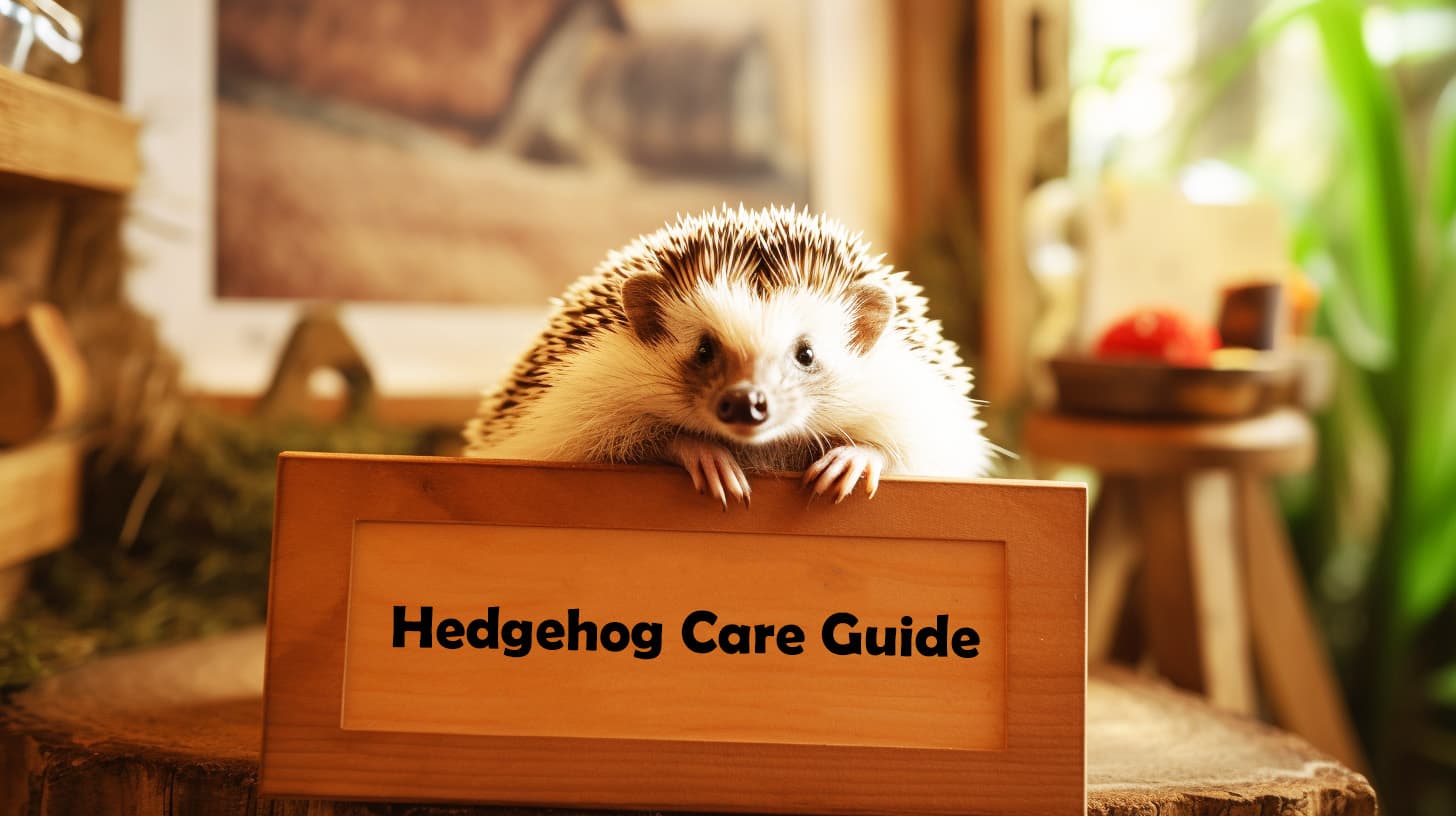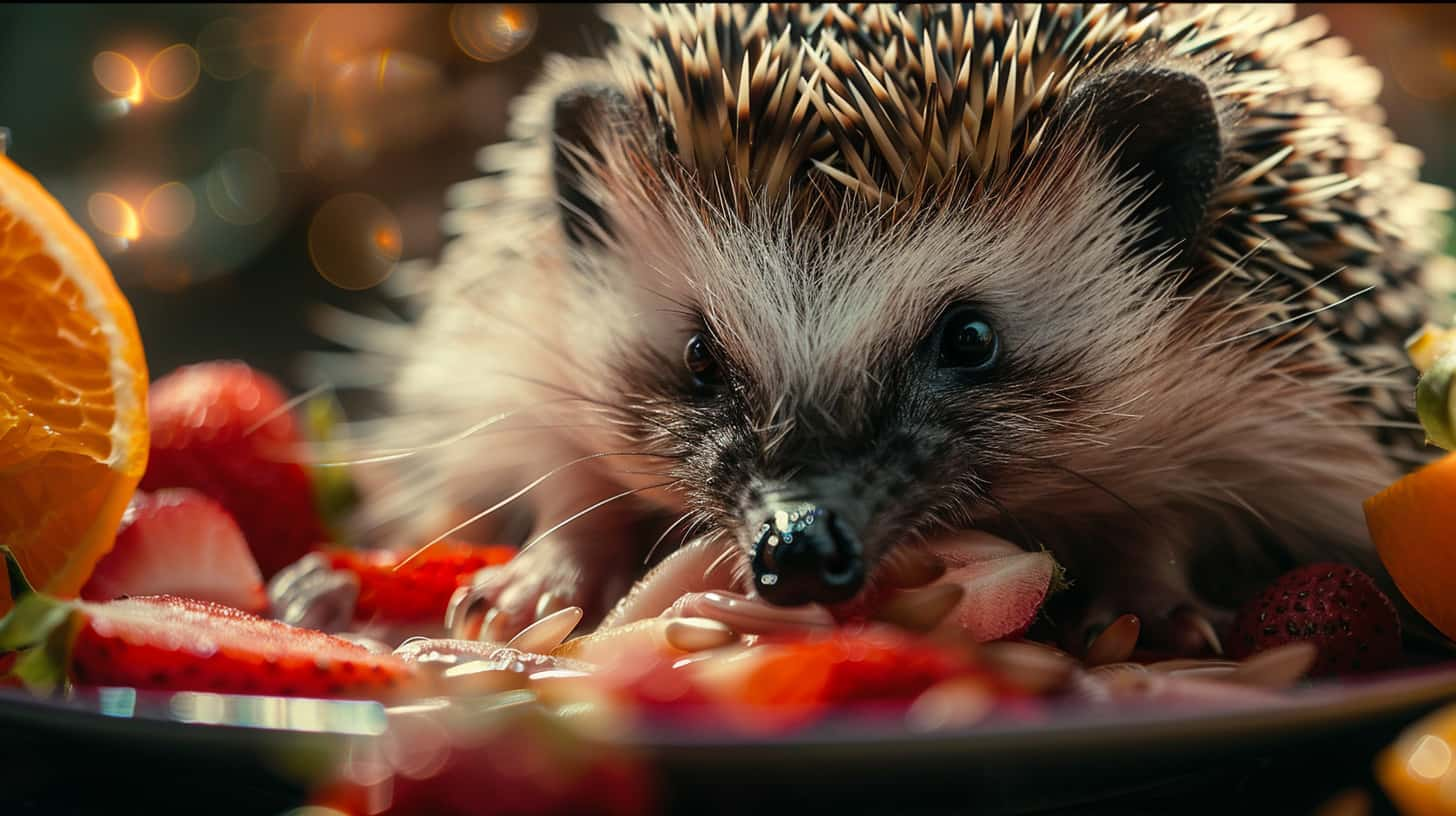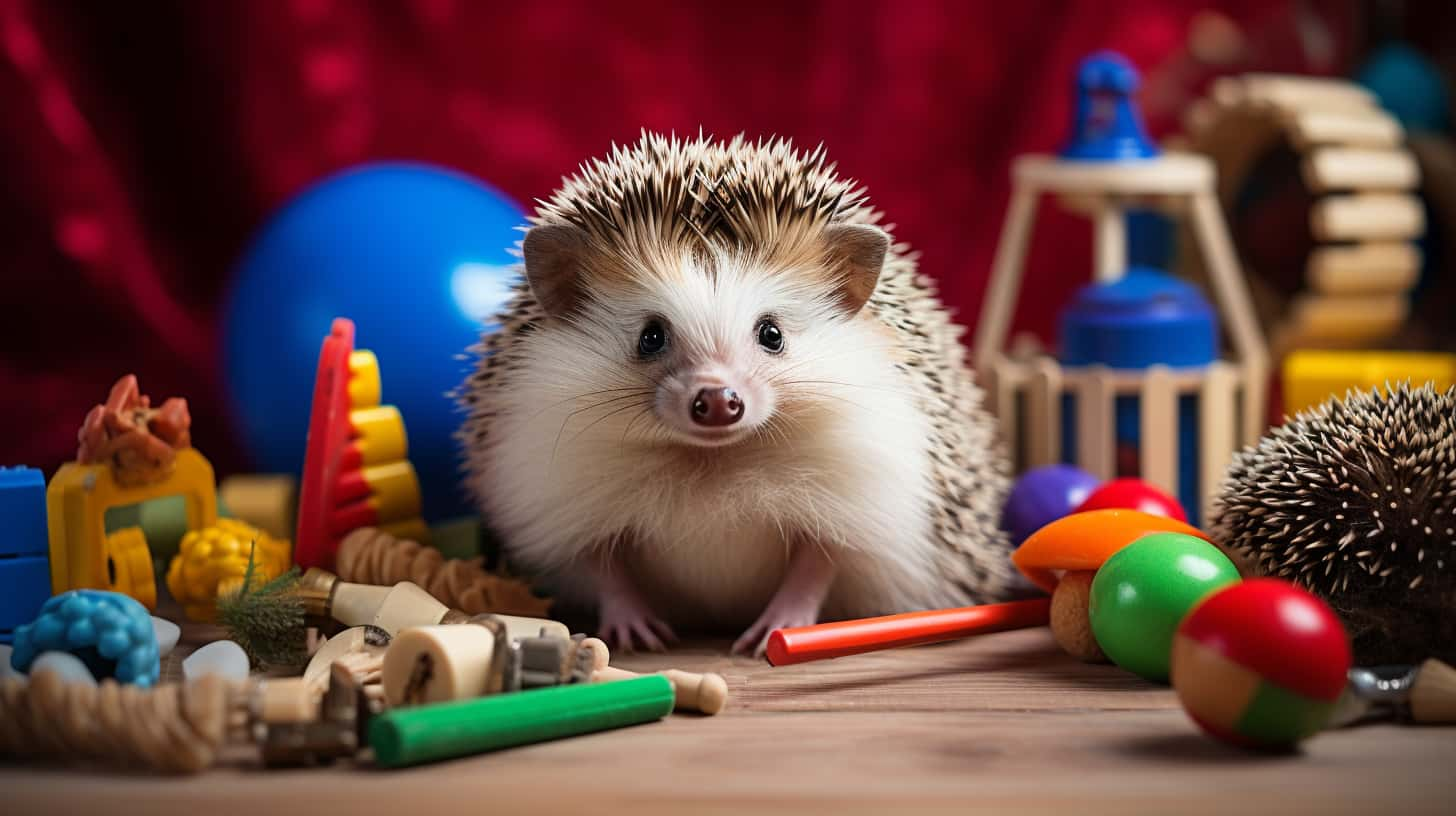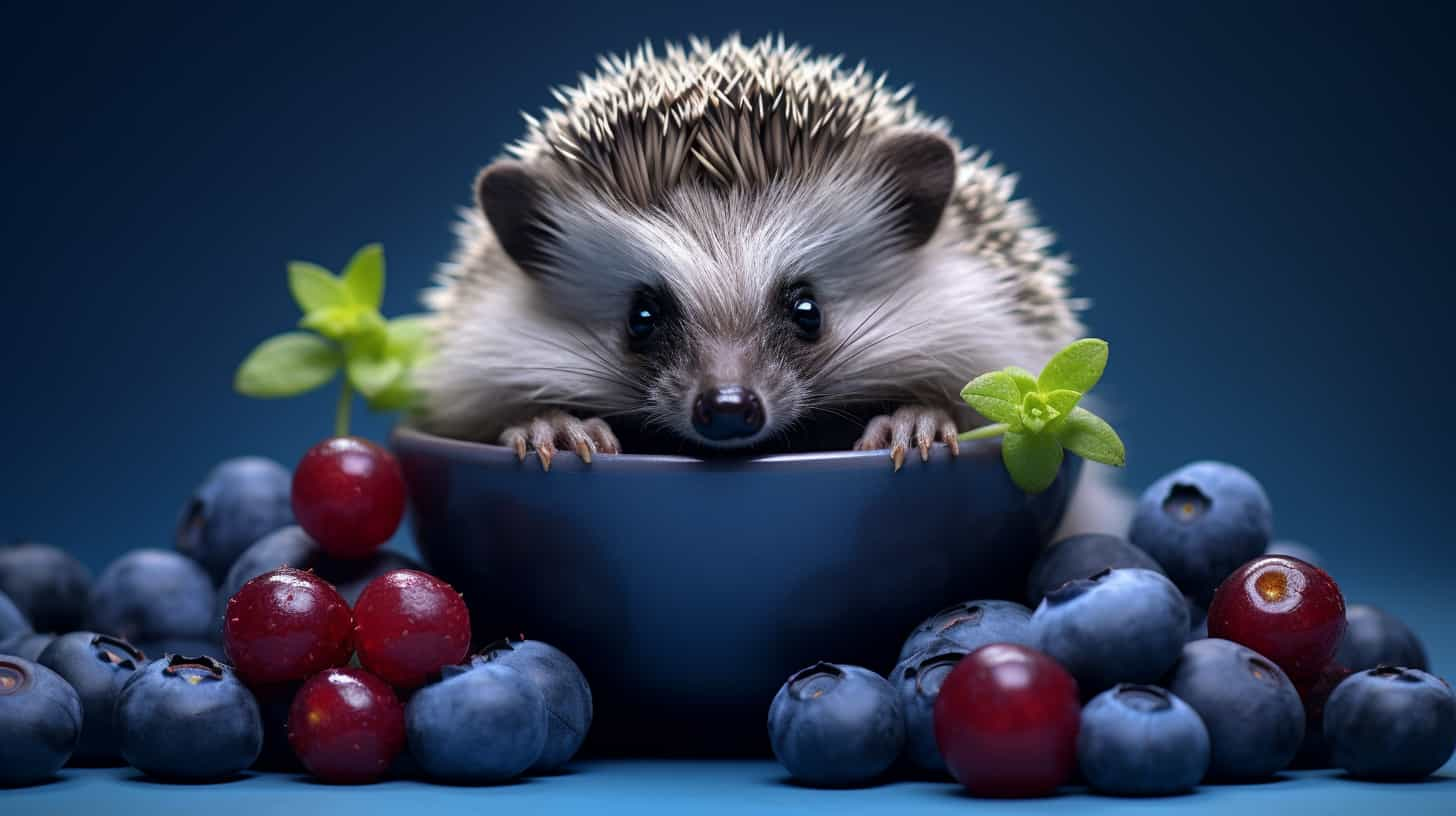Our guide offers you essential tips and insights about diet, habitat, health; everything needed to keep your spikey friend happy and thriving. Let’s dive into a world of hedgehog care guide – it’s simpler than you think!
Hedgehog Species Overview

Delving into the diverse world of hedgehogs, we uncover an array of species each with their unique set of quirks and charms. From the familiar African Pygmy to the elusive European hedgehog, these little critters present a fascinating blend of characteristics that make them more than just your average spiky companion.
Hedgehog Statistics
Hedgehogs are fascinating creatures with a rich history and diverse species distribution. Here’s a quick snapshot of hedgehog statistics that might surprise you:
| Statistic | Detail |
|---|---|
| Species Count | 17 known species |
| Native Habitat | Africa |
| Years on Earth | Approximately 15 million years |
| Activity Cycle | Nocturnal |
| Hibernation | Yes, in some species |
| Personality | Timid |
Hedgehog Characteristics
Hedgehogs are fascinating creatures known for their unique traits. They earned their name from foraging in hedges and making pig-like grunts. Despite their prickly appearance, they have soft bellies and faces. With snouts like pigs, they root around for insects, their primary diet, and can resist snake venom.
With short legs set on a stout body, they might not win any races but are built perfectly for digging through leaf litter seeking supper.
Hedgehog Diet
These adorable insectivores have specific nutritional needs that differ from your average pet, and getting it right is key to their vitality and verve.
Main Food

Hedgehogs love munching on insects and invertebrates, finding worms, beetles, and caterpillars especially tasty. These critters make up the bulk of a wild hedgehog’s diet. Protein-packed snacks like mealworms keep your spiky friend healthy and happy.
Offer commercial hedgehog food pellets as a balanced base for their meals. Mix in live insects such as crickets or cooked meats to give them that insectivore experience they crave.
Water
Hedgehogs thrive on staying hydrated, with water being a must-have in their daily diet. Always keep a bowl of clean water in your hedgehog’s cage to quench its thirst. This simple step plays a big role in maintaining its health and happiness.
Water bottles may seem like a good idea, but some hedgehogs find them hard to use—bowls are better. Fresh water supports all the vital functions within these tiny creatures’ bodies. Milk doesn’t cut it; these spiky friends are lactose intolerant and pure water is their best friend for hydration.
Treats
Offer insects like crickets, mealworms, and earthworms for a crunchy snack packed with nutrition. These little critters can be found at your local pet store and make delicious munchies for your spiky friend.
Supplements
Hedgehogs thrive on a balanced diet, and supplements usually aren’t needed if you’re providing the right mix of nutrients. Your spiky friend’s meals should include high-quality dry food designed for their unique needs.
Many owners also add live insects to the menu—these tasty critters are like natural supplements packed with protein.
Foods to Avoid
Taking care of your hedgehog means knowing what they can and can’t eat. Here’s a list of foods you should never give your hedgehog to keep them happy and healthy.

- Chocolate: Just like dogs, chocolate is toxic to hedgehogs. It contains theobromine which their bodies can’t handle.
- Milk and Dairy Products: Hedgehogs are lactose intolerant. Dairy can upset their stomachs.
- Onions and Garlic: These veggies damage a hedgehog’s red blood cells, leading to serious health issues.
- Avocados: They’re a big no-no for these little creatures; avocados are poisonous to hedgehogs.
- Citrus Fruits: Oranges, lemons, and grapefruit are too acidic and can harm their digestive system.
- Grapes: Both grapes and raisins can cause kidney damage in hedgehogs, so stay clear.
- Nuts and Seeds: Avoid sunflower seeds, peanuts, and other nuts – they’re not suitable for hedgies.
- Sugary Sweets or Foods with Fructose: Hedgehogs don’t need sugar in their diet; it causes obesity and dental issues.
- Raw Meat or Eggs: They might carry bacteria that could make your spiky friend sick.
- Processed Meats: Salty snacks like bacon or sausage aren’t good for hedgehog health.
- Caffeinated Beverages or Alcohol: Giving them anything with caffeine or alcohol is dangerous.
- Human Junk Food: Keep chips, pizza, and other fast foods away from your pet – they’re not fit for hedgehogs.
- Celery and Lettuce: These might seem harmless but offer very little nutritional value for your pet.
- Corn on the Cob & Whole Kernel Corns – These could be choking hazards apart from being tough to digest.
Housing and Environment
Creating a cozy and stimulating environment for your hedgehog isn’t just about comfort—it’s key to their wellbeing. From the type of enclosure that mimics their natural habitat to choosing the ideal bedding that keeps them snug and safe, ensuring the right living conditions is crucial in nurturing a happy, healthy hedgie.
Enclosure
Your hedgehog’s home is their castle, and it needs to be fit for a tiny, prickly king or queen. A cage that is at least 2 x 3 feet provides plenty of room to roam, play, and snooze comfortably.
Wire enclosures designed for guinea pigs work great—they’re spacious and escape-proof. Just like us, hedgehogs enjoy having their own space where they can stretch out and explore.
Make the enclosure truly theirs with a cozy setup tailored specifically for them. Avoid using wood shavings; recycled paper or fleece bedding are better choices since they’re safer and more comfortable for delicate feet.
Ensure there’s enough light during the day but no direct sunlight to overheat their sensitive skin. Your pet’s safe haven should meet all these essential requirements so they can live happily in captivity.
Bedding
Choose recycled paper pellets or kiln-dried pine for your hedgehog’s bed. These materials are safe and comfortable for them to burrow in. Make sure the bedding is free from dust, which can harm their little noses and lungs.
Never use cedar shavings as they can cause health problems for your spiky pal. Aspen is another good option that keeps their cage cozy and clean. Change the bedding at least once a week to keep your hedgehog’s home fresh and welcoming.
Always check for dampness or dirt and remove it quickly to prevent any issues.
Feeding Dishes
Hedgehogs need the right bowls to munch and slurp comfortably. Pick two small, shallow dishes for their kibble and bugs—one for each type of snack. This keeps their food clean and separate, just how they like it.
Don’t forget a heavy bowl or water bottle that won’t tip over easily. Fill it with fresh water every day to keep your spiky friend hydrated.
Place these dishes in a quiet corner of the hedgehog’s cage away from bedding areas. They love routine, so try feeding them at the same spot daily. Keep the dishes clean by washing them regularly—this helps prevent bacteria buildup and keeps mealtime safe and pleasant for your pet hedgehog.
Handling Hedgehogs
Handle your hedgehog with clean hands to get them used to your scent. This helps them feel safe and build trust with you. Start by letting your hedgie walk onto an open palm or scoop gently underneath it using both hands.
Move slowly so you won’t startle the little creature.
Make sessions short at first, gradually spending more time as they become comfortable with being held. If they roll into a ball, remain patient – this is how hedgehogs protect themselves when scared.
Talk softly and stay calm, giving them time to understand that they’re in no danger with you. Regular handling is key for a social and happy pet!
Hedgehog Care Guide: Grooming and Care
Mastering the art of hedgehog grooming and overall care ensures your spiky pal’s health and happiness. It deepens your unique bond—dive into our guide for all the how-tos and savvy tips on creating a thriving habitat for your hedgie.
Feeding
Hedgehogs need a special diet to stay healthy. Give them high-quality hedgehog food mixed with low-fat cat food for the best nutrition. These little insectivores love munching on mealworms and crickets, but make those treats occasionally.
Mix store-bought, specially formulated foods as their main meal. This ensures they get all the nutrients they would find in the wild—minus the bugs, plants, and roots hard to come by at home.
Avoid fatty or sugary human food; it’s not good for them. Stick with what’s made just for hedgehogs to see them thrive.
Grooming
Hedgehogs are generally clean animals, so they don’t need much grooming. However, a regular bath helps keep them fresh and healthy.
- Bathing: Give your hedgehog a bath about once a month using lukewarm water. Fill the sink or tub with just enough water to soak their feet. Carefully place your hedgehog in the water and pour water gently over its back.
- Mild Shampoo: Use a mild pet shampoo that is fragrance-free. This will ensure you remove any fecal matter without irritating their skin.
- Brushing Quills: Using a soft toothbrush to scrub the quills lightly while bathing. This action removes dirt and helps prevent skin problems.
- Cleaning Feet: Hedgehogs may get dirty feet from running on their wheels. You can gently brush their feet with the same soft toothbrush during baths.
- Rinsing Well: Ensure you rinse all soap from their quills and fur. Leftover shampoo can cause skin irritation for your hedgehog.
- Drying Off: Wash your hedgehog in a warm towel and pat them dry gently after the bath. Avoid using a hairdryer as it might be too hot for them.
- Nail Trimming: It’s important to trim their nails regularly. Use baby nail clippers for this task, and be careful not to cut into the quick—the pink area of the nail where blood vessels are located.
- Checking Ears: Clean their ears using a cotton swab dipped in warm water, but do not insert it into the ear canal; just clean around the outer ear areas.
- Dental Care: Check your hedgehog’s teeth during grooming sessions for any signs of dental disease or buildup.
Exercise
Hedgehogs need plenty of activity to stay healthy. Without exercise, they can quickly become overweight. A running wheel in their enclosure keeps them moving at night since they’re nocturnal critters.
Ensure the wheel is solid-surfaced and large enough for your hedgehog to run without arching its back.
Playtime outside the cage helps too. Create a safe play area where your pet can explore and sniff around. This stimulation prevents boredom and obesity. Toys encouraging running, climbing, or foraging mimic natural behaviors and provide great exercise opportunities.
Disinfecting/Cleaning
Keeping your hedgehog healthy means keeping their home clean. A clean cage helps prevent diseases and keeps your pet happy. Here’s how to disinfect and clean properly:
- Remove your hedgehog from the cage to a safe place before cleaning.
- Take out all toys, feeding dishes, and hiding spots.
- Scoop out the bedding and throw it away if it’s disposable or wash it if it’s reusable.
- Use a pet-safe disinfectant to spray the inside of the enclosure. Avoid strong chemicals that can harm your hedgehog.
- Wipe down all surfaces with a cloth to remove dirt and cleaner residue.
- Rinse everything thoroughly with water to ensure no disinfectant remains.
- Dry the cage completely before putting fresh bedding in. Moisture can lead to mold growth.
- Clean all toys, wheels, and dishes with soapy water. Rinse them well and let them dry.
- Replace everything into the cage once it’s dry. Make sure to organize enough space for your hedgehog to move around.
Enrichment and Training
Hedgehogs love to play and learn. Giving them fun activities helps their brains stay sharp.
- Place different toys in your hedgehog’s enclosure to keep them entertained. They enjoy tunnels, balls, and soft fabric toys.
- Rearrange the toys and the cage layout often. This gives your hedgehog new places to explore and prevents boredom.
- Introduce a running wheel for daily exercise. Make sure it’s solid-surfaced and large enough so their back doesn’t bend.
- Teach your hedgehog to do simple tricks using treats as rewards. Start with easy tasks like following a target.
- Create a dig box filled with safe substrates such as fleece strips or non-toxic, child-friendly play sand for natural burrowing behavior.
- Allow your hedgehog time outside their cage in a secure room. Hedgehogs are very active at night, so let them roam under supervision.
- Add foraging opportunities by hiding treats in small containers or under toys. This stimulates their natural hunting instincts.
- Train your hedgehog to come when called by associating a sound with feeding time. Use this method consistently and they’ll soon respond to you.
- Consider obstacle courses made from cardboard boxes or tubes. Your pet will enjoy the challenge of navigating through them.
- Handle your hedgehog regularly but gently to get them used to human touch. This makes grooming and veterinary visits less stressful.
Health
Navigating hedgehog health can seem daunting, but with the proper knowledge and attention to their unique needs, you can ensure your spiny companion thrives – keep reading to discover how to spot a happy hedgehog and steer clear of potential health hiccups.
Newborn hedgehog care
Taking care of newborn hedgehogs is exceptional work. These tiny creatures need gentle hands and the proper knowledge to thrive. Here’s a guide to help:
- Keep the babies warm, as they can’t yet regulate their body temperature. Use a heating pad set on low under their enclosure.
- Handle them minimally in the first weeks because too much contact can stress them out or cause the mother to reject them.
- Feed the mother well with high-quality cat food and water so she can produce enough milk for her young.
- If you must hand-rear them, use a syringe to gently feed them a unique formula made for baby hedgehogs.
- Provide a quiet space. Loud noises and bright lights can scare both the mother hedgehog and her babies.
- Check daily for signs of health, such as clear eyes, active movement, and steady growth in size.
- Weigh the babies regularly to make sure they are gaining weight, which is crucial for their development.
Hedgehog skincare
Hedgehog skincare is essential to keeping your spiky friend happy and healthy. Skin problems like dryness or infections can make your hedgehog uncomfortable.
- Keep the skin clean. Bathe your hedgehog with a gentle, pet-safe shampoo. Only do this when necessary to avoid drying out their skin.
- Look for dryness. If you notice flaky skin, give your hedgehog an oatmeal bath to soothe irritation.
- Watch for ringworm. This fungus causes infections, so check your pet for bald spots or scaly patches regularly.
- Provide a humid hideout. In the dry corner of the cage, you can place a small box with dampened moss to help maintain skin moisture.
- Use vet – recommended products. For persistent skin issues, seek advice on treatments specifically for hedgehogs.
- Pay attention to diet. Ensure your hedgehog’s diet includes foods rich in fatty acids to promote healthy skin from the inside out.
- Monitor their behavior. Scratching more than usual can be a sign of discomfort or skin issues; visit a vet if this happens.
- Maintain cleanliness in their environment. A clean habitat prevents bacteria buildup that could lead to skin infections.
Hedgehog teeth care
Caring for your pet hedgehog means paying attention to its teeth too. These little creatures have 44 sharp teeth that need looking after. Without proper care, they can suffer from tartar buildup and gingivitis.
Since brushing a hedgehog’s teeth isn’t really an option, you must find other ways to keep those tiny chompers healthy. Provide them with crunchy foods that help scrape off plaque naturally.
Signs of a Healthy Hedgehog
Hedgehogs show they’re healthy in several ways. Look for bright eyes and energetic movements as clear signs your spiky friend is feeling great. Healthy quills should be free of bald spots, which means their skin is likely in good shape too.
Eating and drinking well also tell you your hedgehog’s appetite is on track.
Watch how your little buddy walks and climbs; doing these quickly suggests solid muscles and good health. Spotting these positive signs means you’re giving top-notch care to your pet hedgehog!
Common Illnesses
Hedgehogs face a range of health issues just like other pets. They can suffer from genetic and environmental illnesses, which may need attention from a vet.
- Obesity: This happens when hedgehogs overeat and exercise too little. Being overweight can lead to heart disease and some liver problems.
- Neurological issues: Poor genes or infections might cause these problems. Look for signs like trouble walking or shaking.
- External parasites: Mites and fleas can make hedgehogs itchy and uncomfortable. Treatment involves special baths and medication.
- Internal parasites: Worms inside your pet can lead to poor nutrition and weight loss. Vets treat this with specific drugs.
- Ringworm: A fungal infection that causes skin lesions. Your vet will give you a cream or oral treatment for it.
- Cancer: Tumors may grow in older hedgehogs. Watch for lumps on their body and visit the vet if you find any.
- Gastrointestinal diseases: An incorrect diet can cause tummy troubles. Offer proper food to avoid issues like diarrhea.
- Pneumonia: Cold drafts in their cage might lead to respiratory infections. Keep their home warm to prevent this.
- Wobbly hedgehog syndrome: Genetic problem causing spine issues and wobbliness. Sadly, there’s no cure yet, but keeping them comfortable is vital.
- Skin problems: Dry skin can occur, so keep their living area humid enough but not wet.
- Dental diseases: Bad teeth can hurt a hedgehog’s eating habits. Regular checks are important for dental health.
- Common signs of health: Bright eyes, active behavior, and healthy appetite show your pet is doing well!
FAQs
How do hedgehogs communicate?
Hedgehogs tell us a lot with their sounds. They may purr when feeling happy, just like a cat. Sometimes, they huff or puff when scared or angry. Listen closely, and you’ll hear different noises telling you how your spiky friend feels.
Owners learn to understand these subtle cues with time. Your hedgehog’s back muscles might tighten as it curls into a ball—that’s its way of saying, “I’m scared!” Each sound and movement is part of the special language between you and your pet.
Understanding this helps keep them comfortable and lets you respond better to what they need.
Are Hedgehogs Good Pets?
Hedgehogs can be delightful pets for those who understand their needs. They require a suitable environment with the right cage setup to thrive. These spiky friends are nocturnal, so they’ll be most active when you’re winding down for the evening.
Choosing to bring a hedgehog into your home means committing to their unique care requirements. They cherish solitude and don’t need companionship from other hedgehogs to stay happy.
Make sure you’re ready for some nighttime activity and providing plenty of love during their waking hours!
Can Hedgehogs Bite?
Sure, hedgehogs can bite. Their teeth may be small, but they do use them to nibble when exploring or if they feel threatened. Bites from these spiky critters are less painful than those from hamsters or other rodents.
Understand that a bite is often how they communicate discomfort or curiosity.
If your hedgehog does bite, it’s more of a prick than a serious injury—no significant damage done! Care for your pet hedgehog by learning their body language and handling them gently to avoid bites.
Are Hedgehogs Legal as Pets?
African pygmy hedgehogs have won the hearts of many and are legal to own in some places. But even though they are charming, laws on keeping hedgehogs as pets can vary greatly. You must check local regulations before bringing a tiny friend home.
Cities or states might have their own rules about owning these spiky creatures.
Some areas require permits to keep hedgehogs, while others ban them completely. This is often for environmental reasons since hedgehogs can impact local ecosystems if they escape.
Why Do Hedgehogs Curl Into a Ball?
Hedgehogs have a superpower, and it’s all about self-defense. Imagine having predators lurking around—badgers ready to pounce. That’s when hedgehogs perform their famous trick: they curl into a tight ball.
This isn’t just for show; it keeps them safe! Their quills stick out in all directions, creating a spiky barrier no smart predator wants to mess with.
But threats aren’t always from other animals; sometimes, fear itself is enough to trigger this response. A sudden noise or shadow can send a hedgehog rolling up, hiding its soft stomach and face from potential harm.
It’s like how turtles retreat into their shells, only with spikes! Hedgehogs will use this tactic even in your home if they’re startled—so tread lightly if you don’t want your prickly pal turning into a little armored orb.
What do I need to know before getting a hedgehog as a pet?
Before bringing a hedgehog home, understand that they are nocturnal—awake at night and asleep during the day. They’re solitary creatures who live well alone and don’t need other hedgehogs for company.
Can I hold my new pet hedgehog?
Yes, you can hold your hedgehog, but it’s important to let them get used to being handled gently since they’re not naturally cuddly pets. Handle them carefully so they feel secure.
How should I feed my pet hedgehog?
Hedgehogs are insectivores, so their diet should mainly consist of insects. You can also give them high-quality dry cat food, which is suitable for their nutritional needs.
Do hedgehogs require special housing conditions?
Definitely! Create a comfortable place for your pet with enough space in their cage to help them explore and exercise; keep it at the right temperature because these little guys are sensitive to cold.
What’s something special about how hedgehogs behave with new things?
When introduced to a new object or smell, watch as your curious buddy displays an odd behavior where they may froth saliva onto themselves—it’s totally normal and part of their exploring nature!




